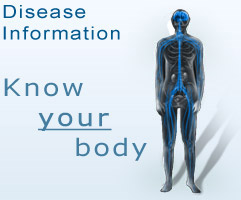Anaemia
What is anaemia?
Human blood contains red blood cells which supplies oxygen to all the organs of your body. Small particles on the red blood cells responsible for binding the oxygen are called haemoglobin. When the quantity of red blood cells or haemoglobin drops, the body's oxygen levels become exhausted and the body's normal processes are impaired.
Causes of anaemia
There are various potential causes for anaemia:
Excessive blood loss
- Excessive and irregular menstruation.
- Haemorrhaging/bleeding from a laceration (cut) or injury to a major blood vessel due to a trauma.
- ‘Hidden' blood loss, e.g. slow-bleeding stomach ulcer.
Decreased red blood cell production
Anaemia will ultimately come about if the rate of red blood cell production is less than that of red blood cell destruction.
More common causes for reduced (effective) red blood cell production include:
- lack of nutrients, such as iron, B12, or folate due to poor diet, malabsorption (e.g. pernicious anaemia), or blood loss (lack of iron);
- bone marrow disorders;
- bone marrow suppression (e.g. drugs, chemotherapy and irradiation);
- low levels of hormones which stimulate red blood cell production, such as erythropoietin due to chronic renal failure, thyroid hormone (e.g. hypothyroidism), and androgens (e.g. hypogonadism); and
- anaemia caused by a chronic condition or inflammation, associated with infectious, inflammatory, or malignant condition.
Increased red blood cell destruction
A red blood cell with a lifespan below 100 days is the operational definition of haemolysis. Haemolytic anaemia will occur when the bone marrow is unable to keep up with the need to replace more than about 5% of the red blood cell mass per day, corresponding to a red blood cell survival of about 20 days.
Examples include:
- Inherited haemolytic anaemia: (e.g. hereditary spherocytosis, sickle cell disease, thalassemia major); and
- Acquired haemolytic anaemia: (e.g. Coombs' test for positive auto-immune haemolytic anaemia, thrombotic thrombocytopenic purpura-haemolytic uremic syndrome, malaria).
Symptoms of anaemia
Symptoms of anaemia are not specific, but they may include:
- feeling tired and lack of energy;
- shortness of breath, especially when exerting yourself;
- fast heart rate;
- palpitations;
- dizziness; and
- symptoms specific to the condition causing anaemia.
Diagnosis of anaemia
Your doctor may diagnose you through a blood test after a thorough examination of your symptoms and history. The blood test is called a full blood count and it is adequate in confirming anaemia. Further testing is usually required to determine the cause of anaemia. These may include a blood smear (testing of blood cells), iron studies, haemolysis studies if there is evidence of bleeding, and on occasion a bone marrow biopsy (removal of tissue for testing).
Treatment of anaemia
Anaemia is a not a condition in itself but an indication of other conditions. Treating these conditions will resolve the anaemia; for example, iron deficiency anaemia will require iron-replacement medication to improve the body's iron stores and haemoglobin levels.
References
http://www.uptodate.com/home/index.html
 TransmedBanner4.jpg)

